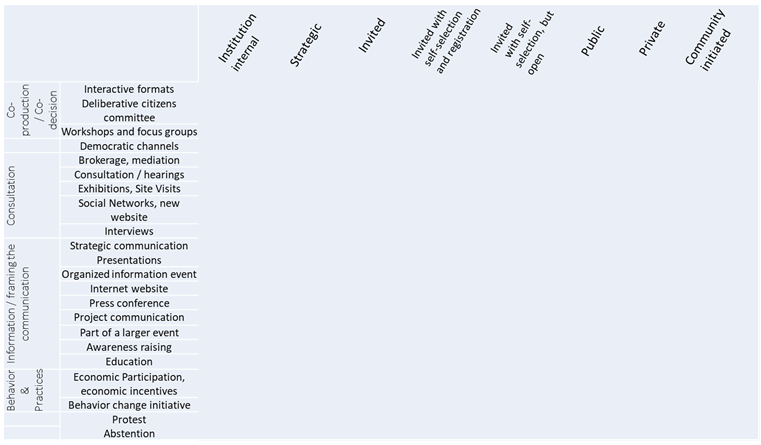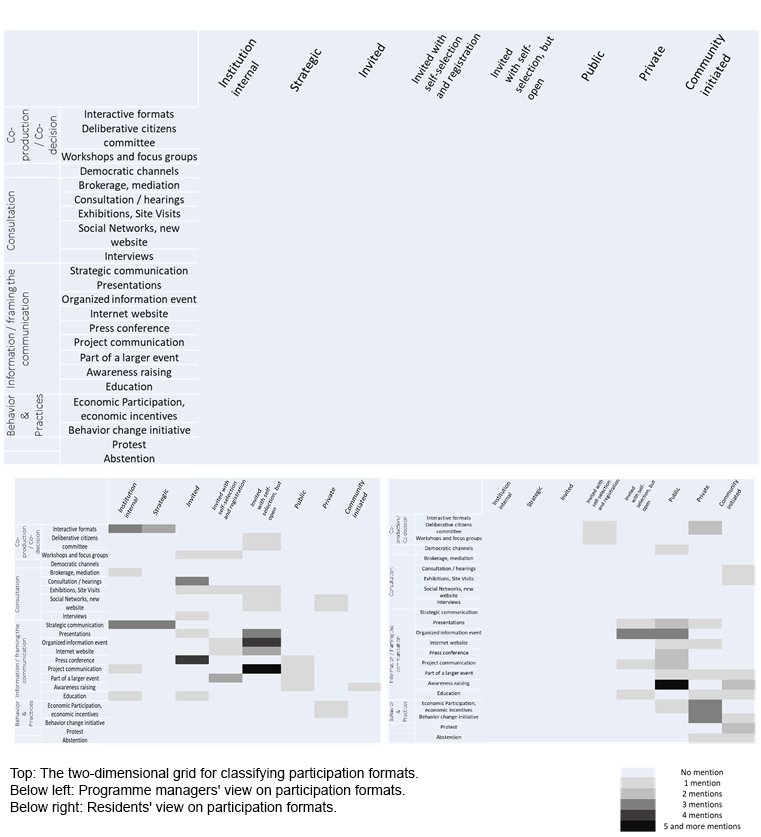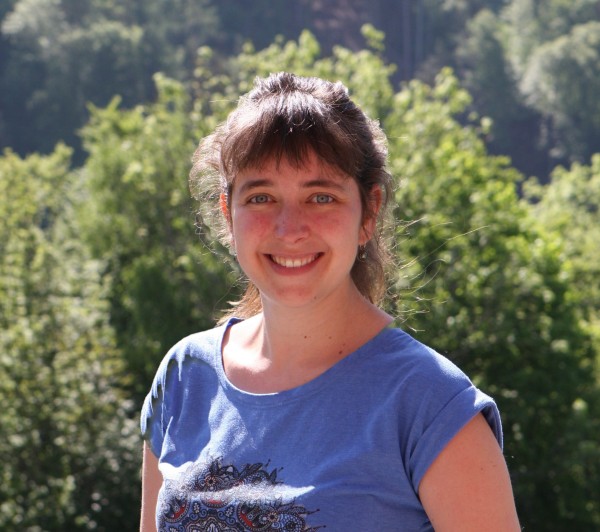How to promote public participation in energy projects - a holistic approach

October 2020 - by Franziska Ruef
Public participation is often brought forward as the solution to achieve social acceptance in energy projects. Despite its broad recognition, participation may be defined very differently depending on one’s perspective. This can lead to misunderstandings about the nature and scope of participative approaches, which can delay or even impede energy projects. Based on empirical evidence from the Genevan geothermal programme, we developed a holistic approach to design public participation.
In Switzerland, citizens can vote several times a year on national and local issues, thus the Swiss public is used to be consulted. In energy projects more specifically, the importance of including the public is increasingly recognized by researchers and practitioners and has in many cases become an integral part of the project planning. Energy transitions need participatory formats for being able to anticipate and tackle unforeseen challenges and for managing surging needs, perceptions and fears from the public.
However, project managers often use so-called classical participation formats such as consultative processes e.g. popular votes or information events., Referring to the “ladder of participation” 1 (pertaining to the degree of involvement in the decision making process) these and similar formats do not consider the context nor the actual needs of the public with respect to participative approaches .
In the framework of our research project “Territorializing geothermal energy in Geneva”, in collaboration with the Genevan geothermal energy programme Geothermie2020, we analyse processes of geothermal energy in the Genevan territory in order to design tools for informed, honest, and democratic public participation. We applied a transdisciplinary research approach including different focus group discussions and observations on site allowing us to get a close-up of the perspectives of the programme management and the residents’.
The approach: a two-dimensional grid
Empirical evidence from our project reveals that the programme management and local inhabitants’ perspectives’ on participation show significant differences but also some similarities. We developed a grid to capture these two perspectives and to compare and visualise them.
The rows and columns are a result of our analysis, categorisation and interpretation of the references by the two perspectives. The vertical axis is the result of interpreting statements about participation by referring to concepts found in literature (e.g. interactive formats, press conference, protest etc.). The horizontal axis distinguishes the formats according to their level of engagement and governance (e.g. strategic, public, private etc.). This allows us to capture not only the differences between the public and the private sphere, but also individual levels of participation linked to self-selection and perception of open- or exclusiveness of different formats. Adding this dimension is important to shed light on issues of power, accessibility and accountability.

Filling in the grid for the Genevan context shows how differently the programme managers and the residents perceive the participation formats. The programme managers see participatory formats mostly in the classical sense, ranging from information over consultation to co-production. The residents are more focused on self-organized bottom-up formats. However, as for the programme managers, information provision is seen as a crucial aspect of participation.
How to use this grid
There are several ways of using this grid, all different in terms of who is using it for what purpose and how much time one wants to spend on it.
1. Assessing existing or planned participatory formats
For project managers that have planned (or conducted) participatory formats: Place the formats you are using or planning to use in the grid to gain an overview about who is in charge of the implementation , who has access to it and who does not, and whether it is institutional-led or self-organized. You may be perform this exercise within the project management team or at a workshop together with involved stakeholders.
Time frame: Approximately half a day, depending on whether you conduct it in a workshop or within the management team.
Expected results: Awareness of potential shortcomings of the formats chosen, sensitivity to dynamics of exclusion and the potential influence of one actor over another.
2. Planning participatory formats
For project managers or others planning participatory formats: The grid is based on an open conception of participation, going beyond traditional formats often cited in literature and thus offers a larger variety of potential ways to engage with the public. Depending on the time and resources available, you may go as far as making interviews with residents to learn more about their wishes and expectations concerning participation and filling the responses into the grid. Without seeking direct input from potential participants, you may use the grid to choose different participation formats covering different cells of the grid. The quickest option would be to first chose a format on the horizontal axis and then to think about where to place the respective format on the vertical axis.
Time frame: Several days to months, depending on the approach you choose.
Expected results: Openness to different participatory formats, also the under-theorized ones. Sensitivity to accessibility and governance. Possibility to develop a participation strategy covering a wide range of formats.
3. Identifying different perspectives and potentially adapt and expand them
For researchers, project managers or others interested in participatory processes and their conceptualization: As demonstrated for the Geneva project, you may undertake a similar proceeding in any other context where participation is used or planned. The methods of focus groups and participant observations have proven to be very valuable to get this kind of depth pertaining to participative formats. However, you may also use semi-structured interviews, written documents and informal notes. It is very possible that further studies of this kind will adapt and expand our grid.
Time frame: It makes sense to gather data over a longer period in order to get a comprehensive picture of the participation landscape in question.
Expected results: Rich impression of the different perspectives of participation, their overlaps and differences. This in turn is useful for you to see whether they are more or less in line with these perspectives.
The grid could be applied to many other purposes, such as tracking the evolution of participatory processes over time or comparing the formats for different technologies, just to name a few.
Energy projects profit substantially from holistic participatory formats
Whatever approach is chosen to use the grid, the take-home message remains the same:
A participatory format is more than a flat definition of its modalities. It needs to be understood holistically: Who is behind it? Who is invited? Who is excluded? Who makes the decisions? And is it understood in the same way by everyone involved and if not, what are the differences?
Being sensitive to these questions and asking them again and again allows for a more efficient planning and conducting of participatory formats. Coming back to energy projects more specifically, such an enhanced understanding of participation can help moving these projects forward with less risk of delay or even suspension.
1. Arnstein, S. R. A Ladder Of Citizen Participation. J. Am. Plan. Assoc. 35, 216–224 (1969).
Author

Franziska Ruef holds a M.Sc. in human geography, and is a PhD student at the Transdisciplinarity Laboratory for Environmental Systems Sciences at ETH Zurich. Her PhD is part of the Project for Territorialisation of Geothermal Energy in Geneva, an interdisciplinary collaboration with the Geneva Geothermal Energy Project. The project results will be integrated into the joint activity between SCCER-SoE and SCCER CREST.
Learn More
More detailed information on the holistic participation approach can be found in the article recently published by Franziska Ruef, Michael Stauffacher and Olivier Ejderyan entitled "Blind spots of participation: How differently do geothermal energy managers and residents understand participation?". It is available on the website of the science magazine Energy Reports.
